|
Lesbian Poet Herstory Page Manager:
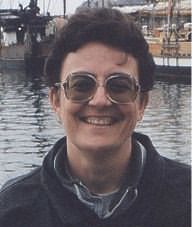
Trish Shields
bard@subee.com
Please contact Trish
with your questions or suggestions for
this section.

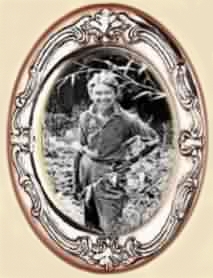
Elsa Gidlow

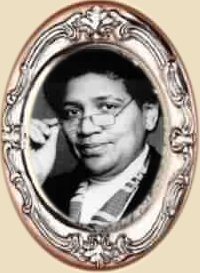
Audre Lorde

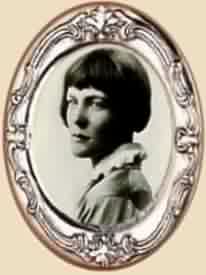
Hilda Doolittle

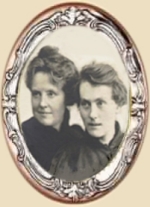
Michael Field
(Kathryn Bradley
and Edith Cooper)

|
|
Under the able
direction of poet/novelist Trish Shields,
these pages of Just About Write will introduce Lesbian
poets from
the past, a little
about their herstories, and a sampling of their works.
These women were pioneers, and
they left a remarkable legacy for
us all. We urge you
to take the time to learn something about them
and their lasting
impressions of life, love, and the world around us.

Amy Lowell
1874-1925
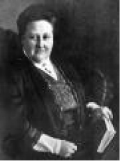
Amy Lowell was born in Brookline, Massachusetts, on February 9, 1874. She was the youngest of five children born into a life of wealth and
prominence. Her brother, Percival Lowell, became an astronomer in his
late 30s and founded the Lowell Observatory in Flagstaff, Arizona. He
is credited with discovering the "canals" of Mars. Amy Lowell's other
brother, Abbott Lawrence Lowell, became president of Harvard
University.
Higher education was not something Lowell women were offered. They
were supposed to be gentile ladies of grace who would always defer to
men. However, having access to her father's 7,000-volume library
ensured that Amy would be well-read and she began a self-education
program that would encourage her to write and keep a journal. "Dream
Drops; or, Stories from Fairyland" was published privately in 1887 by
her mother, who also contributed material, and the proceeds were
donated to the Perkins Institute for the Blind.
Her writing took a different turn when she came upon her cousin Robert
Lowell's poetry. The area of poetry opened a world that ensured Amy
would have a voice in which to explore her feelings. She became a poet
late in life, when she was 28 years of age. By 1910, her first poem
was published in Atlantic Monthly, with three others accepted there for
publication soon after. In 1912, she purchased the first books
published by Robert Frost and Edna St. Vincent Millay, well-known poets
of the day, which provided further inspiration. She published her
first collection of poetry, A Dome of Many-Coloured Glass, this same year.
But 1912 was also an important year for Amy because she met Ada Dwyer
Russell.
Because living openly as a lesbian was impossible, Amy was careful to
hide her desires in poetry. T. S. Eliot called her the "demon
saleswoman of poetry." Amy said of herself, "God made me a
businesswoman and I made myself a poet."
Ezra Pound coined the term "imagism" in 1912 to help market some poems by H.D. (Hilda Doolittle) that he was sending to Poetry magazine. He explained to Poetry's editor, Harriet Monroe, that H.D.'s poems were written "in the laconic speech of the Imagistes." When Amy Lowell read H.D.'s poems in the January 1913 Poetry, she felt her own identity as a poet had been defined. She went to London to meet Ezra Pound and other Imagist poets, armed with a letter of introduction from
Harriet Monroe. By the time she returned to England
the next summer, Amy was feuding with Pound, who dismissed her version
of Imagism as "Amygism." Ignoring him, she focused on writing poetry
in the new style and supporting other poets who were also part of the
Imagist movement.
From about 1914 on, Ada Russell, a widow who was 11 years older than
Lowell, traveled with Amy as secretary and living companion. They lived
together in a "Boston marriage" until Amy's death. It's obvious that
Amy's great creative output from 1914 until her death in 1925 was due
solely to the inspiration she gained from Ada. Whether the
relationship was platonic or sexual is not certain because as executrix
for Amy after her death, Ada burned all personal correspondence.
However, the poems which Amy clearly directed towards Ada are sometimes
erotic and full of suggestive imagery.
Amy's second book of poetry, Sword Blades and Poppy Seeds, was
published in 1914. Many of the poems were in free verse, which she
renamed "unrhymed cadence." Others were in a form she invented, which
she called "polyphonic prose."
Between 1915 and 1917 Amy Lowell published an anthology of Imagist
verse, as well as two new volumes of poetry. She began lecture tours
and was a popular speaker. Her habit of sleeping until three in the
afternoon and working through the night contributed to make her
overweight. She was diagnosed with a glandular condition that caused
her to continue to gain weight and had several operations for
persistent hernia problems.
Amy wore a pince nez and dressed mannishly, in severe suits and men's
shirts. She was famous for smoking cigars, which she claimed were less
distracting to her work than cigarettes, because they lasted longer.
During an illness in 1922 she wrote and anonymously published "A
Critical Fable." For some months she denied that she'd written it. Her
relative, James Russell Lowell, had published "A Fable for Critics," a witty and
pointed verse analyzing poets he felt were his contemporaries. Amy
Lowell's "A Critical Fable" also skewered her own poetic
contemporaries.
Amy admired the work of John Keats and had been collecting his poetry
since 1905. For the next few years, she worked on an extensive
biography which included an almost day-by-day account of his life. The
work was hard on Amy's health and she nearly ruined her eyesight. In
May of 1925, she was bedridden with a troublesome hernia. Going
against doctor's orders, she got out of bed, suffered a massive
cerebral hemorrhage and died a few hours later.
Ada Russell published three more volumes of Lowell's poems
posthumously. They included some poems considered too controversial
for Lowell to publish during her lifetime. Amy Lowell left her fortune
and family estate in trust to Ada Russell.
Lillian Faderman and others rediscovered Amy Lowell as an example of
poets whose same-sex relationships had been important to them in their
lives, but who had not been in a position to be open about their
relationships. They re-examined poems like "Clear, With Light Variable
Winds" or "Venus Transiens" or "Taxi" or "A Lady" and found a barely
concealed theme of the love of women. Her poem, "A Decade," had been
written as a celebration of her ten-year anniversary with Ada, and the
"Two Speak Together" was recognized for the love poetry that it is.
The same-sex theme was not completely concealed, especially to those
who knew the couple well. A friend, John Livingston Lowes, recognized
Ada as the object of one of Amy's poems and wrote to her about it. It
is unclear whether she rebuffed his discovery or admitted to it.
However, Amy Lowell's poetry now lives on, a recognized celebration of the
committed relationship and love between her and Ada Dwyer
Russell.
Here are a few poems by Amy Lowell. You can find more of her work
here:
http://www.english.uiuc.edu/maps/poets/g_l/amylowell/additional.htm

Petals
Life is a stream
On which we strew
Petal by petal the flower of our heart;
The end lost in dream,
They float past our view
We only watch their glad, early start.
Freighted with hope,
Crimsoned with joy,
We scatter the leaves of our opening rose;
Their widening scope,
Their distant employ,
We never shall know. And the stream as it flows
Sweeps them away,
Each one is gone
Ever beyond into infinite ways.
We alone stay
While years hurry on,
The flower fared forth, though its fragrance still stays.
-- From A Dome of Many-Coloured Glass
The Taxi
When I go away from you
The world beats dead
Like a slackened drum.
I call out for you against the jutted stars
And shout into the ridges of the wind.
Streets coming fast,
One after the other,
Wedge you away from me,
And the lamps of the city prick my eyes
So that I can no longer see your face.
Why should I leave you,
To wound myself upon the sharp edges of the night?
-- From Sword Blades & Poppy Seed (1914)
|


